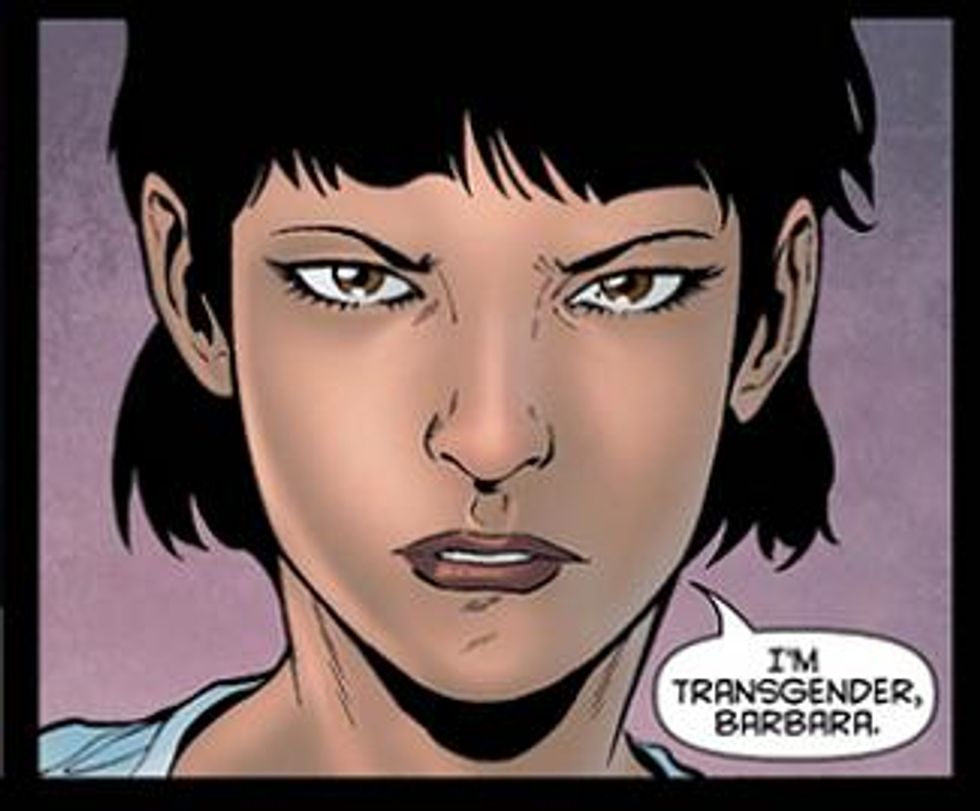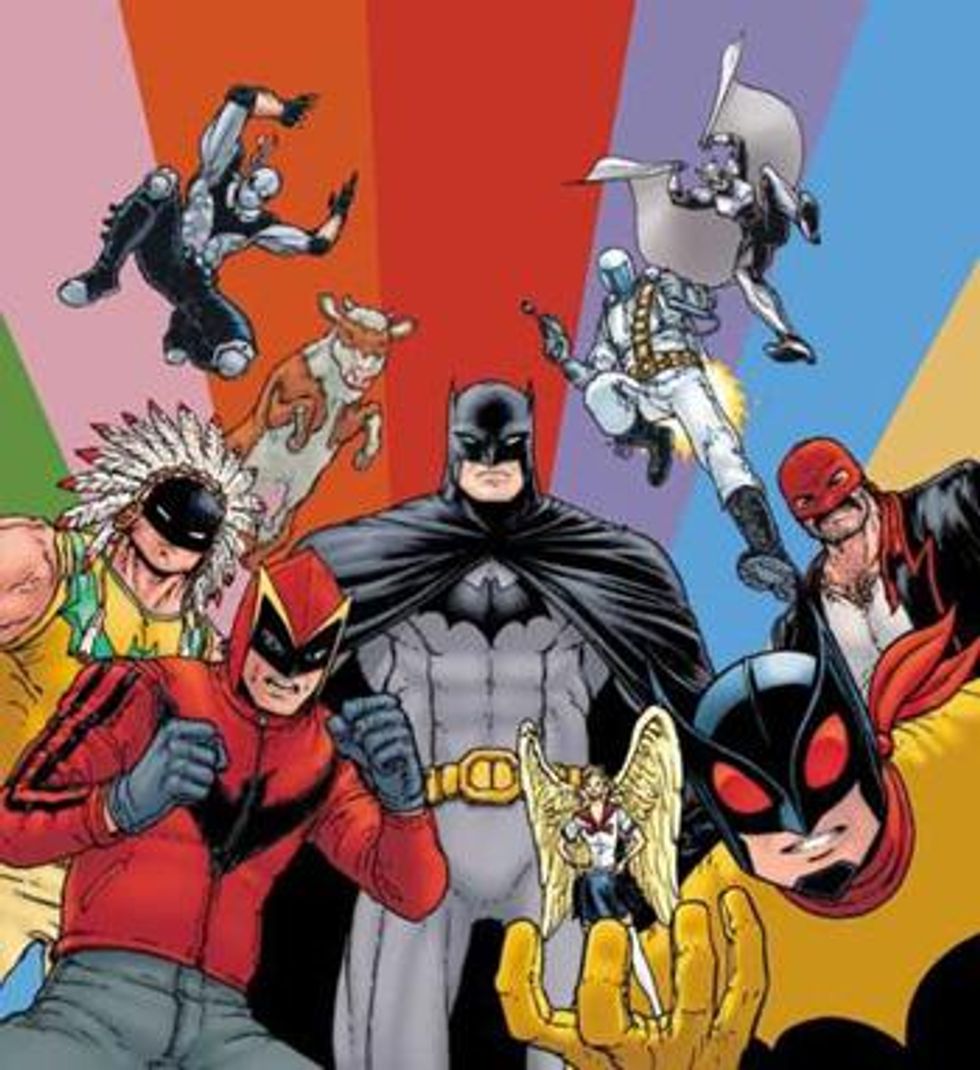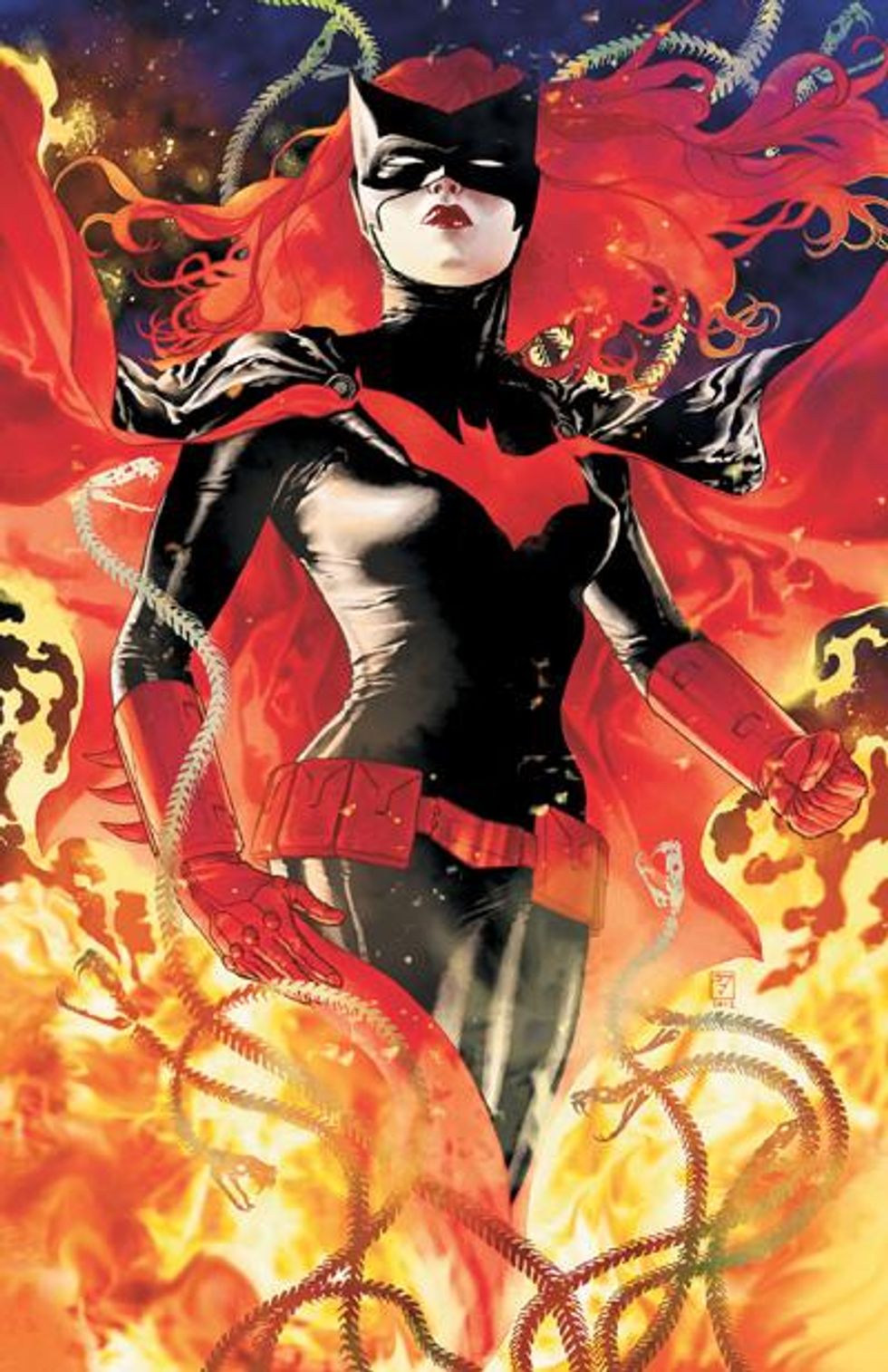
Batman may be a straight white rich guy, but many of the key people in his life are anything but.
August 27 2014 7:00 AM EST
By continuing to use our site, you agree to our Privacy Policy and Terms of Use.

Batman isn't the first superhero who springs to mind for most comic book readers when it comes to furthering visibility for minority groups in comics. Nevertheless, while the Batcave has been dominated by white, heterosexual males since the Dark Knight first swung over Gotham City in 1939 on the cover of Detective Comics #27, his extended family and supporting cast have included a surprising number of characters from diverse backgrounds.
From kick-ass women like the biracial (Chinese and Caucasian) Batgirl Cassandra Cain and the wheelchair-using Oracle (Barbara Gordon) to LGBT superheroes like Batwoman and crime-fighters of color such as Batwing (the Batman of Africa), a kaleidoscope of characters have helped the Caped Crusader clobber criminals throughout different eras of Batman's 75-year history.
Writer Gail Simone says the inclusion of prominently featured minority characters in Batman's world is "a good reflection on the people who work in the bat-verse," and she would know. As one of the most respected female writers working in the industry today, she has helped expand diversity in both the world of the Dark Knight and the general DC Universe. She helmed the Batman spin-off series Birds of Prey for more than 50 issues. The series featured a female superhero team led by Oracle, Barbara Gordon, who was paralyzed from the waist down for several years after an encounter with the Joker ended with a bullet to the gut and sidelined her career as Batgirl. Under the tutelage of writers like Simone, Oracle became a champion for readers dealing with disabilities of their own. When DC decided to return the red-haired heroine to the role of Batgirl following a company-wide reboot in 2011, she pushed the boundaries of diversity again by giving Gordon a transgender roommate named Alysia Yeoh (pictured below).

While many diverse characters have been introduced as a part of Batman's extended family over the years, it takes more than an introduction or random guest appearance for them to gain lasting resonance with fans. "I feel like focusing on a few successes is a bit misleading, because there's still a long way to go," says Simone. She insists that beefing up the prominence of more diverse characters is a passion of several creators currently working at DC, and readers will only see this evolution pick up speed in the near future.
"I just want to see a wider spectrum of characters in terms of gender, ethnicity, sexuality, and more. I feel like it's the issue for the future of this medium I love," she adds, promising a "prominent bisexual male character" will be arriving "in Gotham soon."
Creating characters that reflect both the broad range of comic readers and the diversity of the world's population is also a goal of Scottish comic-book writer Grant Morrison, who introduced Batman's first multiracial Robin to the bat-family with the introduction of Damian Wayne (the son of Talia al Ghul and Bruce Wayne) in his iconic story Batman and Son. But the biggest way in which Morrison has helped diversify the shadow of the bat has been through his series Batman Incorporated (pictured below), which depicted the Dark Knight creating a global team of superheroes that included Native American dynamic duo Man-of-Bats and Little Raven, El Gaucho of Argentina, the African Batman known as Batwing, and the Hong Kong-based Blackbat -- Cassandra Cain's moniker after her tour as Batgirl ended.

Morrison's current high-profile project for DC, a nine-part miniseries titled The Multiversity, underscores Simone's observation that furthering diversity in comics is a reflection of the people who work on them. Morrison's latest dimension-spanning tale includes the Justice League of Earth-23, which boasts a black Superman (who is also the President of the United States on that Earth as well as the leader of the League), a gay speedster named Red Racer, and the aboriginal Australian powerhouse Thunderer among its members.
"I would like to think that people can pick up books like Batman Incorporated or The Multiversity and see their own lives reflected," says Morrison. "But I'd always caveat that with the need for us to see more diverse writers and artists, because that's when I think the walls will really come down. As a straight [white guy from Scotland] I can only do so much, and I find even sometimes when you do this, you do get accused of tokenism or pandering. I don't mind it. I can put up with that, but I'd rather see a genuine spread of writers and artists creating this material."
Story continued on the next page.
Above: Grace Choi, Renee Montoya as The Question, Crispus Allen as The Spectre, Oracle, Katana, Maggie Sawyer, Batwoman, and Lucius Fox are a sample the characters who have colored the extended family of the Dark Knight throughout his history.
One such member in DC's league of current creators is out gay writer Marc Andreyko, who took over the reins of the comic company's highest-profile LGBT superhero, Batwoman, with issue #25 of her ongoing solo title.
"The fact that there is a character like Batwoman, who happens to be gay, under the mantle of Batman is stupendous," says Andreyko. "As we move toward a more corporatized society and stockholders get involved, things get safer. So for DC to commit to having an openly gay character as a part of their number one franchise, I think that's a pretty awesome thing."
It's an opinion shared by Tom Taylor, the current writer of Injustice: Gods Among Us -- a comic series featuring an alternate reality of the DC Universe based on the video game of the same name. "I was absolutely thrilled to be able to show Batwoman and Detective Renee Montoya are married in the pages of Injustice," he says of DC's support. "And we may see more of this relationship in the future."
Andreyko insists that while civil rights for LGBT people are improving, the existence of characters like Batwoman have never been more important because of the affect they have on young readers living in areas of the world where minorities are not as visible as they are in more progressive cities. "I think living in a big city like New York or L.A. or San Francisco -- that's a bubble in a lot of ways and people forget it's not like that everywhere," he says. "Just look at the rash of gay teen suicides and the fact that the highest causes of death among trans people are homicide and suicide."
Yet as impactful as these characters are in the pages of the comic books they appear, the most powerful ways they help expand the diversity of the genre is their inclusion in other media; a practice we are beginning to see intensify with TV and film projects based on Batman and other DC superheroes.
"I remember when I was a kid and they introduced the Lucius Fox character in the comic, who has in the last 10 years become a mainstay of the Batman films.," Batman: Collected author Chip Kidd says of the character Morgan Freeman played in director Christopher Nolan's Dark Knight trilogy. "I thought that was a brilliant way to bring an African-American character into an executive level at Wayne Industries, and I love that in the movies he was sort of the Q to Batman's James Bond."

Katana, the Japanese sword-wielding warrior who first appeared in 1983 as a member of the superhero team Batman and the Outsiders, has also begun reaching a wider audience thanks to her inclusion as one of the lead characters in the 2013 animated series Beware the Batman and she will be a reoccurring character in the upcoming season of Arrow.
"I was recently honored to speak on LGBT and disability representation in the media at the White House and while there was a genuine feeling among attendees that things are getting better, we are still seeing a lot of pushback," says Simone, who notes being a custodian of these characters isn't just a job, it's a responsibility. "I know it gets said a lot, but when people see heroes who are like themselves, it sticks with them. It means something. We just have to do better. It's that simple."
If many of the creative minds currently crafting the adventures of the Caped Crusader and his super-friends have their way, that's exactly what fans can expect to see over the next 75 years of Batman stories and beyond.
"I'd like to see diversity grow in the entire comics medium, not just in Gotham," says Taylor. "I believe everyone needs heroes and everyone deserves to recognize themselves in their heroes."
Charlie Kirk DID say stoning gay people was the 'perfect law' — and these other heinous quotes